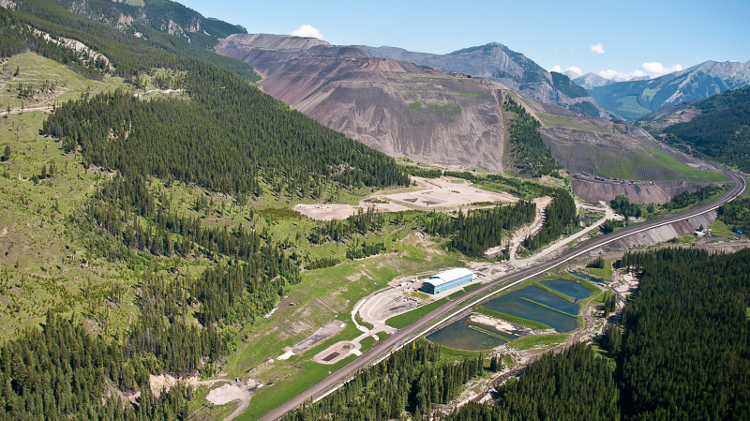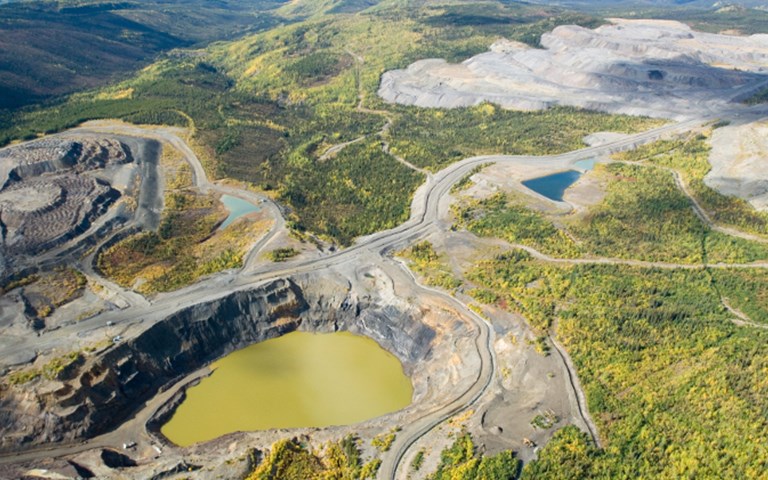The key features of INAC’s remediation plan for the Faro mine will involve upgrading tailings dams, re-sloping waste rock piles and upgrading the site’s contaminated water collection and treatment system. Courtesy of Indigenous and Northern Affairs Canada
The federal government has spent hundreds of millions of dollars on Yukon’s giant abandoned Faro Mine since it took control of the site almost 20 years ago – and not an inch of the 2,500 hectare property has been remediated, according to the Treasury Board of Canada’s 2015-2016 report.
In an e-mail to CIM Magazine, Indigenous and Northern Affairs Canada (INAC) said the federal government has spent “about $350 million” on the site, with the lion’s share of the money spent on project management and maintenance. Faro sits in an ecologically sensitive valley near the community of Faro in the south-central portion of the territory, in Ross River Dena First Nations territory.
The full amount, INAC spokesperson Melissa Madden wrote, breaks down to around $150 million spent on care and maintenance; $75 million on project management; $5 million on “regulatory activities;” $10 million on consultation and training with First Nations; $35 million on developing a forthcoming remediation plan; $15 million on environmental protection; and a further $60 million on advanced remediation projects, including a Grum sulfide cover for some of the most highly contaminated waste rock and a new water treatment plant.
The federal government assumed control of the site in 1998 when the mine’s operator, the Anvil Range Mining Corporation, went bankrupt. Despite completing more than 100 studies in that time, INAC still has not completed an official remediation plan. According to Madden, the plan “has been advanced to approximately 20 per cent of the design” and the department is aiming to finish it by 2018, when it will be submitted to the Yukon Water Board and the Yukon Environmental and Socio-economic Assessment Board for approval. She said the ministry expects the remediation work to commence six years later, in 2024. (And according to a recent Globe and Mail article, administrators said the clean-up will cost around $1 billion – on top of the money that has already been spent.)
The project has been a source of frustration to many for years, including Lewis Rifkind, a mining analyst with the Yukon Conservation Society (YCS), a territorial non-profit. Citing heightened levels of zinc and fluoride in affected waterways, he said that government feet-dragging is leading to serious environmental damage and that the problems get worse every year the remediation is delayed.
The YCS is calling for a third-party audit of the project. “We’ve spent $350 million just to keep the status quo,” said Rifkind, who claimed that the government has been challenging to work with and until recently did not make water data public. That information is now available on one of the government’s websites, which has “been revamped and reposted,” according to Patricia Randell, director of the Yukon government’s Department of Assessment and Abandoned Mines, which oversees maintenance of the site with federal government funding.
Many of the challenges stem from the site’s massive size, which was once home to one of the world’s largest lead-zinc mines. The tailings ponds hold some 70 million tonnes of waste and there are an estimated 320 million tonnes of acid-leaching waste rock.
“It’s a unique project, and it’s quite complex,” Randell said. She countered the notion – stated on the Treasury Board’s website – that none of the project has been remediated. Both the waste rock cover (which covers 27 of the site’s 500 hectares of waste rock) and the new water treatment plant, she said, will be “permanent fixtures” of the remediated site. She also underscored the large scale of the project, noting that project managers had to shift priorities to address heightened levels of zinc in a nearby creek.
Asked what she expects the plan to look like, Randell said the end goal is to protect “human health and safety and the environment.” INAC’s Madden said the plan’s key features will involve upgrading dams to ensure tailings stay in place, re-sloping waste rock piles, installing soil covers over both tailings and remaining waste rock, upgrading stream diversions and upgrading the site’s contaminated water collection and treatment system.
For Rifkind, what is most needed is a sense of urgency. He said he believes the project has dragged on for too long and that administrators have been “spinning their wheels” for years, blaming each other for the inaction. Meanwhile, he said, the site is “casting a long shadow” over the entire mining industry.




